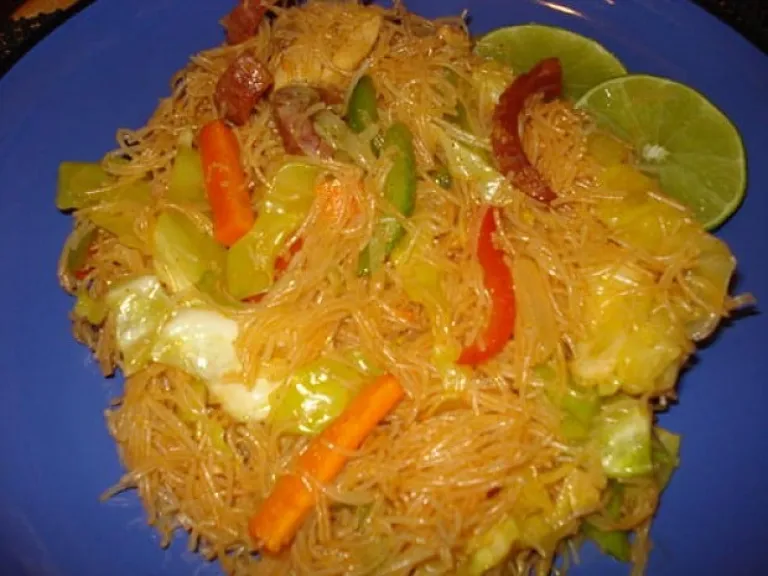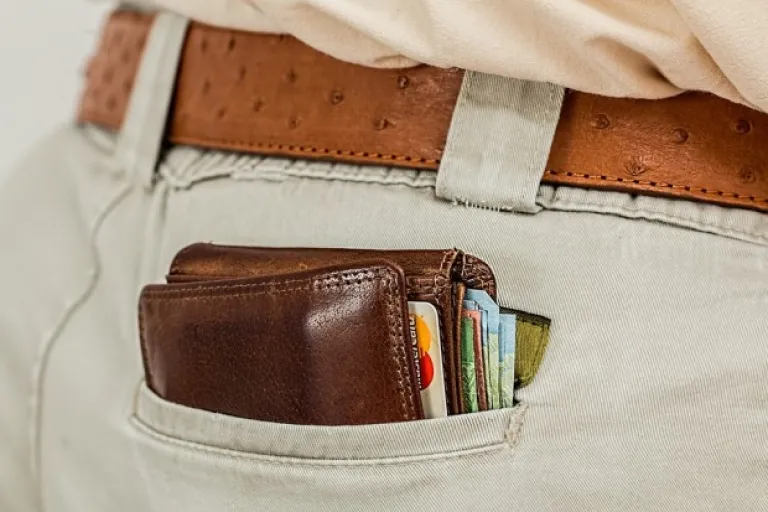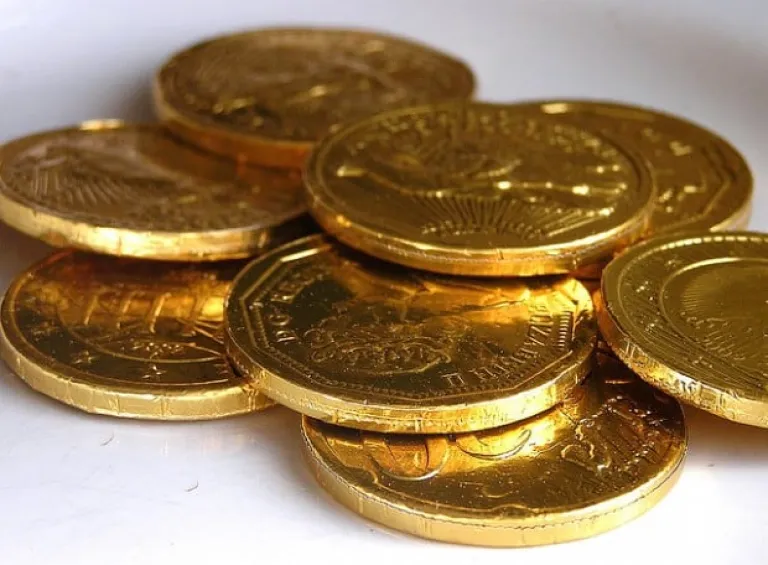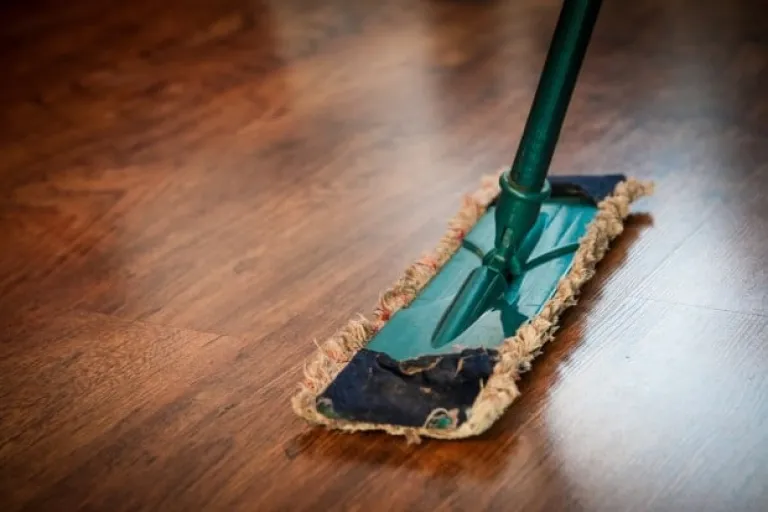Our favourite places to stay on this sleepy Cebu island.
Filipino New Year Superstitions – Do You Still Believe in Them?

New Year’s celebration is considered as one of the highlighted events in the Philippines. It is the conclusion of the year that has been, with the hopes of a better year ahead. As a country that has strong Oriental and Western influences, it is not surprising that some traditions and superstitious beliefs have been passed on from generations to generations.
Superstitious or not as a person, here are some of the New Year traditions and superstitions that are still practised today in the Philippines.
Also read: 10 Proudly Filipino Christmas Gift Ideas
On food
1. 12 round fruits to represent each month of the year
 Image credit: Daderot
Image credit: Daderot
There are different takes on the first tradition on our list. Some say that you must consume 12 grapes (or any round fruit) by midnight of December 31st, while others display 12 different kinds of fruits at the centre of the dining table. This is to ensure good luck and abundance for the rest of the upcoming year. This is one of the most popular traditions that is still in practise today.
Tip: Expect a huge (almost double) markup on round fruits the last few days before the 31st of December. It would be best to buy several days in advance, and select the fruits that will stay fresh for a bit longer time.
2. Malagkit and pancit
 Image credit: Foodista
Image credit: Foodista
You know this one’s coming. Delicacies made with malagkit (glutinous rice) are such a hit during New Year’s Eve celebration. In Chinese symbolism, glutinous rice signifies ‘coherence of the family’. Remember that there is a difference in meaning between this and our staple cooked rice, which is for fertility and luck when served on special occasions.
Pancit, which is preferably made with unbroken glass noodles, is for long life (this is also often served in birthdays for the same reason). As a country where family ties are important and are being maintained as tight as possible, this definitely has a deeper meaning.
3. Vegetables
 Image credit: Mahlum
Image credit: Mahlum
Another set of traditions that is more practised by Filipinos with Chinese heritage, vegetables also have their share of symbolism to jumpstart the upcoming year. Bean sprouts are sometimes served because they are believed to give the new year a good start, as well as promote contentment. Green is the colour of money, that’s why cabbage and lettuce are also included on the list. These vegetables symbolise wealth and prosperity.
Tip: Cabbages are among the vegetables that see an increased demand during this season, being one of the staple ingredients in most dishes served in New Year’s Eve (specifically, pancit). If you can have access to the local market, it is better to buy from there to select the ideal size and to promote the welfare of the sellers as well.
On money
1. Have money inside your pocket and wallet

This ensures a financially sound year ahead of you. As part of the tradition, notes should be arranged where the money faces you and not the other way around. It is believed that when you arrange them facing towards you, the cash flows towards you and not away from you.
2. Coins of gold and silver
 Image credit: liz west
Image credit: liz west
It is such a common custom to make sure that there are coins available when the clock strikes 12:00. Gold coins (the chocolate ones wrapped in gold foil) are often displayed on the table centrepiece together with the fruits, or if you want to go authentic, there are Chinese stores that sell gold-plated ones. The real coins are often thrown around the house to shower and let the financial blessings come in. Some families throw them around, while others hide them in random places like under the bed or a drawer.
On house rules
1. Jump for joy

It is a common custom to allow kids to jump several times with the belief that this will increase their height. In fact, even the adults who are challenged in the height department do this as well (who knows, it might work for you, right?).
2. The quintessential New Year fashion – Polka Dots

I’m sure your lolos (grandpas) and lolas (grandmas) have passed this tradition to the current generation. Clothes with polka dot prints will always be a hit during the New Year celebration. The round prints symbolise coins and money, and they attract positive financial vibrations to keep you financially stable for the upcoming year. The best print? Green polka dots, because it hits both the shape and colour of money.
3. Let there be lights and sounds

All of the lights around the house are encouraged to be switched on to ensure a bright new year ahead. Sounds, whether in the form of firecrackers or horns, or the clanky sound of pans and utensils, are used to drive off bad spirits and negative vibes.
Also read: Take the Quiz: How Well Do You Know the Philippines?
On post-celebration
Party is over, but the superstitions are not. On the first day of the year, there are several things that you should not do.
1. Do not clean the house

Now you have the perfect excuse if you’re feeling a little lazy on the first day of the new year (it’s tradition, Mom!). It is believed that when you sweep the floors and wipe the windows, you also sweep away good luck.
2. Do not touch scattered firecrackers

While this is not necessarily a tradition or superstition, we added it here to ensure a safe year after a wonderful celebration.
3. Do not go ballistic on expenses

If you’re getting a big spender vibe on the first day of the year, hold your horses. Not only it is economically bad, it also violates the tradition regarding thriftiness. If you will spend a lot on the first day, chances are, you will spend a lot for the rest of the year, which is not a very good forecast when it comes to expenses.
Also read: 8 Reasons Why Christmas is More Fun in the Philippines
The year that is about to end may or may not be our best year, but what is important is that a new year and a new chance await us. Whether you are the traditional or radical type of person, a little bit of luck certainly won’t hurt.
Published at
About Author
James Aquino
Subscribe our Newsletter
Get our weekly tips and travel news!
Recommended Articles
10 Bantayan Island Resorts, Hotels, and Rentals for Your Tropical Escape 10 Best Mountain Cafes in the Philippines for Your Peak Coffee Experience Coffee date on the mountains, anyone?
10 Fairytale Castles In Europe Filipinos Need To See! Permission to feel like royalty even for a day?!
10 Family Outing Ideas in Metro Manila Under ₱500 Looking for a weekend bonding with the family under ₱500? Head to these places, pronto!
10 Fun Things to Do in Manila Alone Live your best life in Manila, even when you’re riding solo.
Latest Articles
Thailand Eyes to Build Disneyland Instead of Casino Complex Thailand is considering bringing Disneyland to the country, replacing a previously proposed casino and entertainment complex.
US May Require Five Years of Social Media History for Tourists Are Filipino tourists affected?
3 Days in Okinawa: Everything We Saw, Did, and Ate in Japan's Southern Gem Here's your ultimate travel guide to Okinawa, Japan!
Cheap Domestic Flights Needed as Philippines Ranks Last in Southeast Asia Tourism Tulfo says local flights are too expensive and Filipinos deserve better travel deals.
The Quiet LA Travel Hack Travellers Should Know: Why Flying Into Ontario Airport is Way Better Here's how to get to LA without going through LAX!

